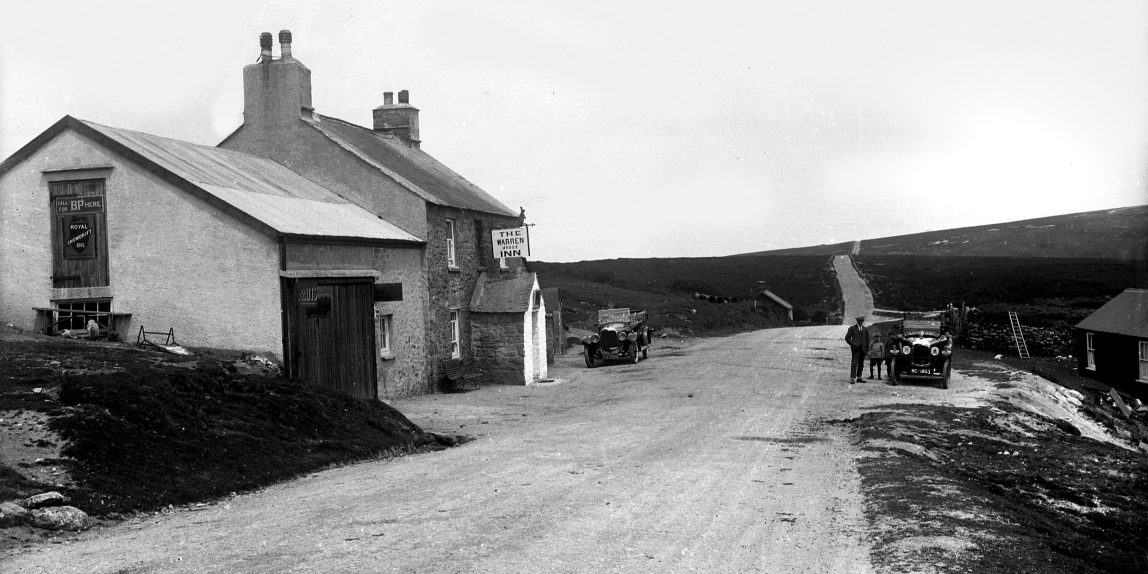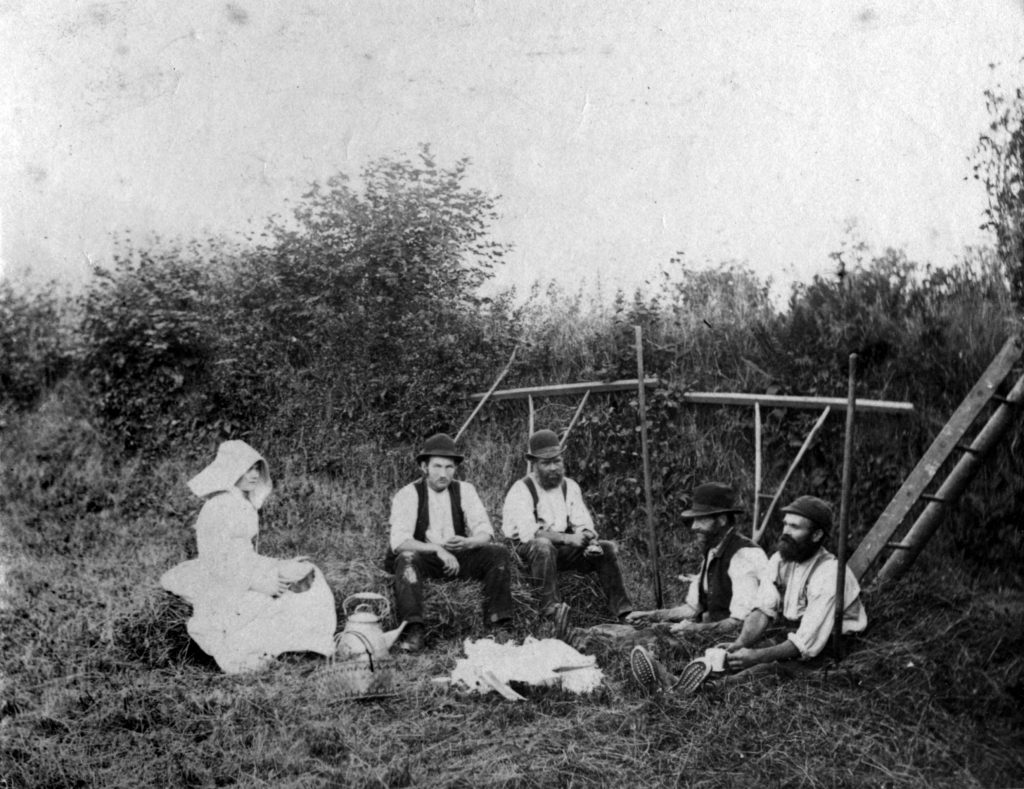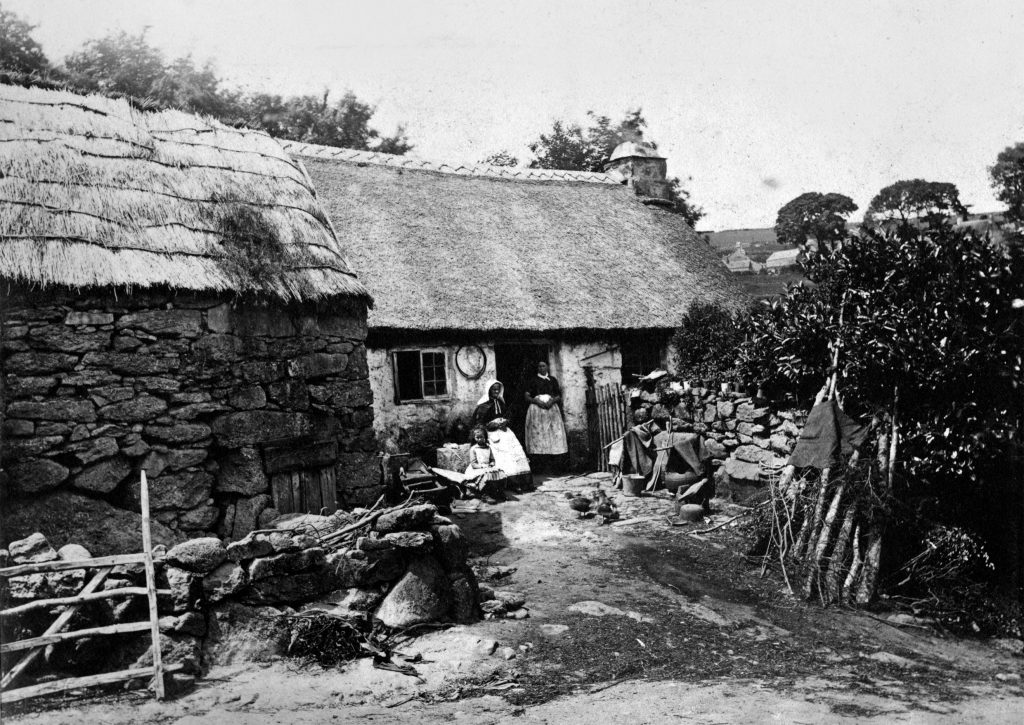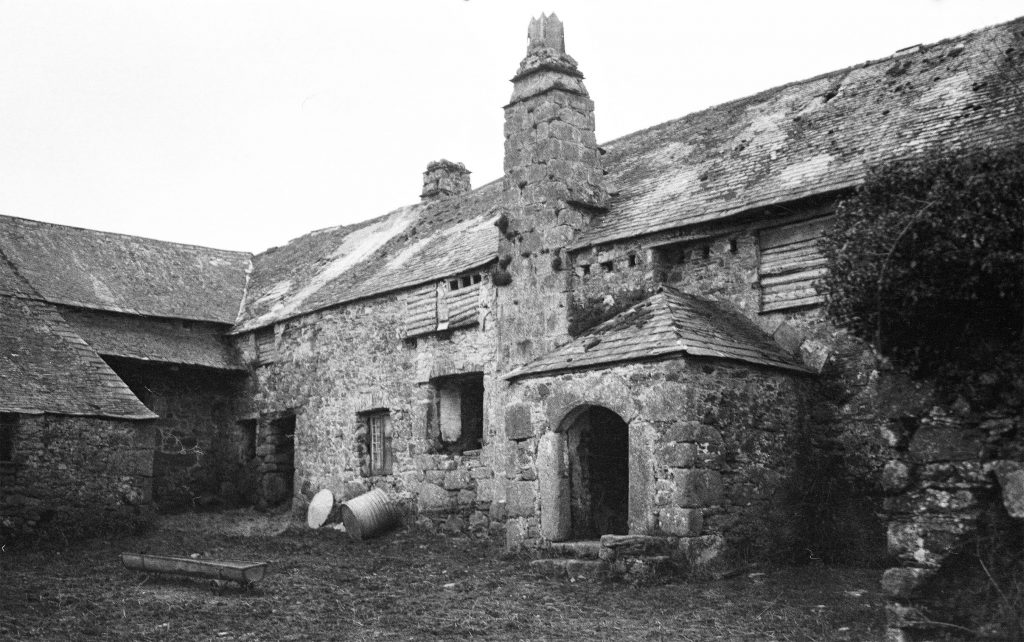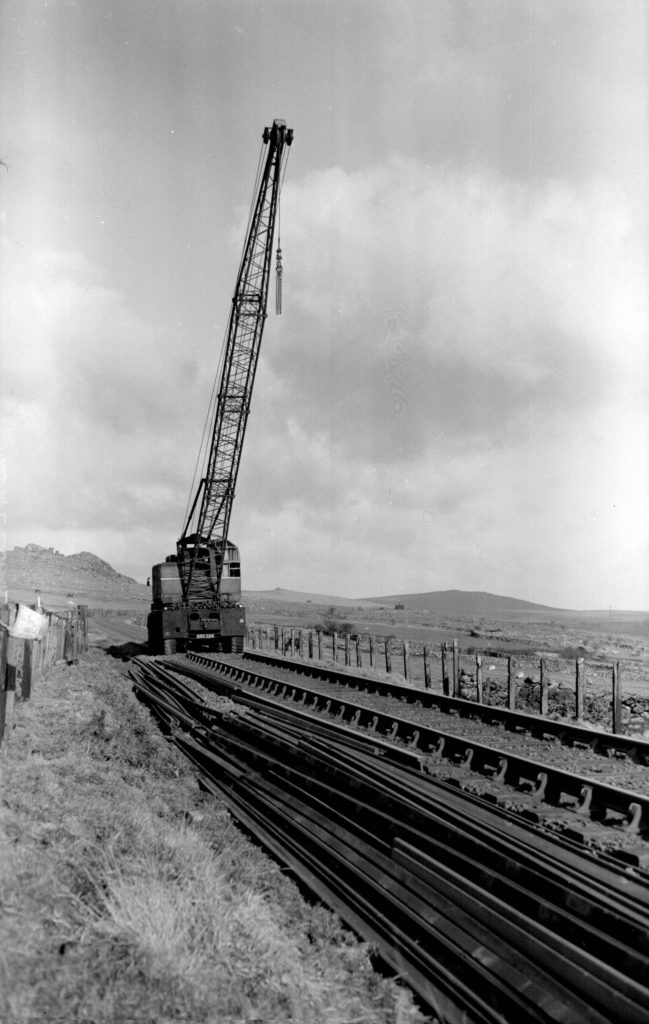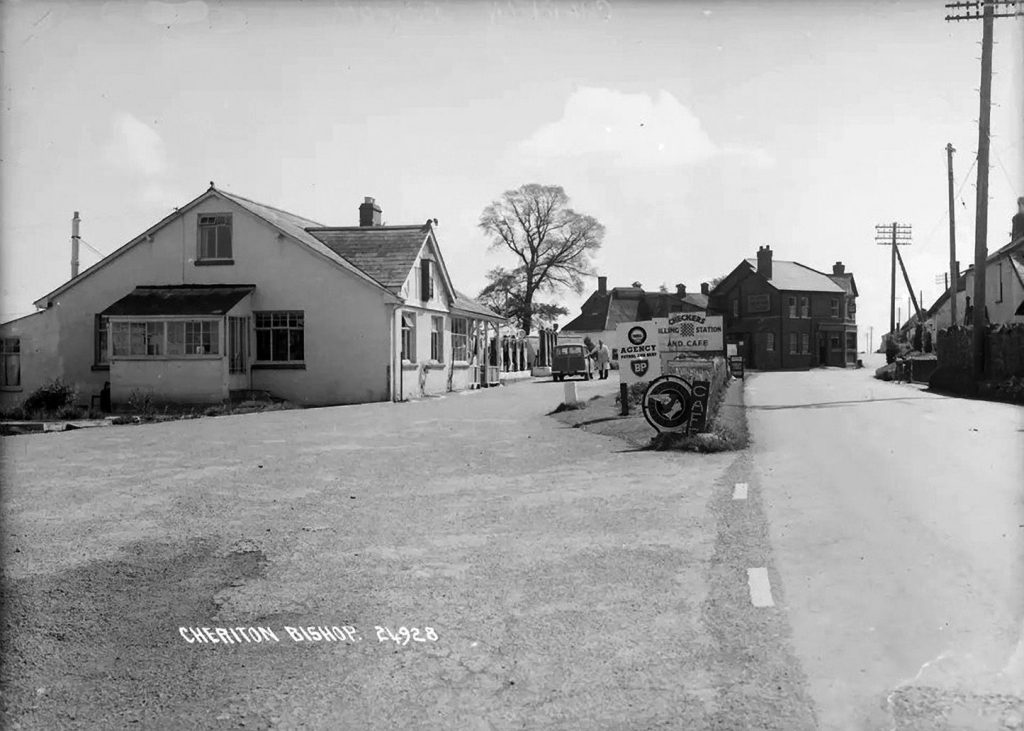Formed in 1996, The Dartmoor Trust is an independent, non-political charity formed to protect and promote the appreciation of the natural landscape of Dartmoor and preserve its wildlife, archaeology and buildings.
Since 1998 it has been developing an extensive online digital archive of historic Dartmoor images to support it’s work.
Simon Butler, a founding director of the Trust spoke to the Dartmoor Collective’s Jon Vernon about the work of the archive, it’s history and future plans.
JV: Can you tell us a little about the history of the Archive, and how it came to be set up?
SB: Following the establishment of the Dartmoor Trust through the Dartmoor National Park in 1996, the Trustees decided to look for a single project that would underpin the overall objectives of the Trust whilst giving it a permanent profile alongside its support for local projects. In 1998 the Trustees settled on the establishment of a digital archive – largely photographic – dedicated to preserving and making available to the public historic Dartmoor images.
This was in the early days of image digitisation during which a number of national and international archives, prompted by available funding, were rushing to establish online digital archives. Devon County Library Services had commissioned a study to create a portal through which the public could access the County’s archives but sadly the study and the early system devised proved too complex and the Trustees were obliged to look for alternatives. At this time, I was working on digitisation projects in the publishing industry and met with those working at the Getty Archive in Los Angeles to discuss what paths they were following and how, in a small way, useful lessons might be learned for our own Archive.
Following a successful grant application, the first collection digitised was the photographs of Robert Burnard, comprising largely late 19th century photographs that had been donated to the Trust. Now, linking with the IT department at the University of Exeter, the Trust looked to develop their own web-based archive using available software backed up by bespoke programming provided by the university.
In order to publicise its work and to promote the Dartmoor Trust, the first Dartmoor Century book was published in 2000 based on the Burnard Collection. This compared images of Dartmoor taken a century apart with contemporary ‘matching’ photos taken by Trustees.
The book was launched alongside a major exhibition of photographs. At this time the Trust employed a full time Archivist and Project Officer, who worked from an office within the University, controlling day to day running of the embryonic archive whilst building the digital collection of images.
Then followed the digitisation of the Taylor Collection – an archive of around 4000 images held by the DNPA and a second Dartmoor Century book was published in 2001, again accompanied by an exhibition of images.
In 2005, the Trust received a significant bequest which allowed the digitisation of two other large collections – the Chapman Collection and the Worth Collection – which, along with many smaller donations of images, has seen the Archive grow to its current size of 30,000 images.
Now in its 20th year, development of the Archive website continues as technology advances. In addition to upgrading the site’s search functionality, a map-search facility has been introduced that will allow users to create their own walks, and download images and information either as a paper document or digitally on to a smart phone or similar device. This work is undertaken by Jamie Dunbar.
Alongside this, social media now plays an increasingly important role in promoting the Archive through Twitter and Instagram, overseen by one of our Trustees, Charlotte Catto.
JV: Why do you think Dartmoor has been such an inspiration for photographers and other artists over the centuries?
SB: In my opinion, artists have never found the landscape of Dartmoor particularly easy to capture on canvas. Few have done it really well. Unlike, say, the drama offered by the mountainous regions of Scotland or the Lakes, Dartmoor perhaps requires a more practised eye to reflect what its scenery has to offer.
One might argue that truly spectacular landscapes give even the poorest photographer a chance to shine, whereas successfully capturing Dartmoor’s elusive character requires a more subtle eye…
Likewise for photographers. The variables brought about by the seasons, the notorious fickleness of Dartmoor’s climate, the fleeting effects of passing clouds, means that two photographs of the same place taken even minutes apart, while equally effective aesthetically, can produce entirely different results. One might argue that truly spectacular landscapes give even the poorest photographer a chance to shine, whereas successfully capturing Dartmoor’s elusive character requires a more subtle eye.
JV: Can you talk us through the collections and some of the important images in the archive?
SB: I’ve selected the following photographs to represent some of the larger and most important collections held in the Dartmoor Trust Archive.
They have been selected, in part, because they show what might be called inadvertent detail, that is information that was not part of the original purpose for taking the photographs but which, through the passage of time, today provides a fascinating insight into the past. This aspect alone gives further credence to the importance of ensuring such images are preserved. Those selected here represent a time line from the earliest through to the end of the print-only photographic period.
The Hunt Collection
This is one of the earliest photographs in the Archive and was taken by the author and antiquary, Arthur Roope Hunt (1843-1914), a Torquay businessman who bought a farm at Foxworthy, Manaton in the 1880s.
It shows haymakers at Foxworthy, in 1886, taking a well-earned rest. Crib (or croust as such meal-breaks were known) has been brought out to the field by Annie Huxtable, in bonnet and white dress. The farmworkers are George Ellis, Nichols, and John and George Derges.
Hunt’s photograph albums are important for not only do they contain detailed information about the people in his photographs, but the images themselves also have a high degree of aesthetic appeal.
The Burnard Collection
Robert Burnard (1848-1920), co-founder of the Dartmoor Preservation Association, was among the first of Dartmoor’s antiquarian photographers who recorded the work of early archaeologists in discovering and restoring many of the moor’s prehistoric features. Frowned upon today, these early efforts in ‘rebuilding’ stone rows etc. nonetheless provide us with details of the landscape that might otherwise have been lost. Burnard was also keen to record people and places on the moor at the end of the Victorian period when he recognised that much of what he saw was likely to disappear forever. This photograph, taken in June 1889, shows Sarah Satterly and her family standing outside Jolly Lane Cot.
As Burnard records:
“Jolly Lane Cot is an illustration of land cribbing from the Duchy by one of the small fry. This picturesque little cottage was erected in a single day (thus in law creating a freeholding from which the cottager could not be dispossessed) about fifty-five years since (in 1835) by the husband of the present occupier as a home for his aged father and mother.”
The Worth Collection
Richard Hansford Worth (1868-1950) is among the first of Dartmoor’s historians to apply scientific methods to the study of Dartmoor. His book Worth’s Dartmoor (1953), while dated in many respects, remains a seminal work. Worth’s original photographs of the moor, numbering over 6000, are held in the Torquay Natural History Museum and via a grant from the Dartmoor Trust these negatives have recently been digitised and included in the Dartmoor Trust Archive. Many are detailed shots of artefacts, taken to illustrate and support his writings, but his photographs of old farmhouses and derelict buildings on and around the moor, many since disappeared, provide important evidence of the past. This photograph is of Moors Head Manor, Dean Prior, taken in the 1940s. The place was abandoned as a dwelling until 1878 and it is now a ruin.
The Taylor Collection
This important collection was held by the Dartmoor National Park Authority having been purchased at auction in the 1980s. Plymouthian, Frank Taylor, began photographing the moor in the late 1800s and his son, Sydney, continued building the collection into the 1960s. While many of the images are family orientated, Dartmoor figures greatly and Sydney’s interest in transport inspired many images of railways around the moor, including important pictures showing the dismantling of the Princetown line in the late 1950s.
The Chapman Collection
William James Chapman founded the firm of Devon postcard publishers in the 1860s – based in Dawlish – the company becoming Chapman & Son in 1893. As the holiday industry in Devon grew, hundreds of thousands of their Chapman & Son cards were published, their Dartmoor images alone running to many hundreds. Following closure of the firm in 1967, the collection was donated to the Devon Record Office and the digitisation of over 4000 images was made possible through a grant from the Dartmoor Trust. Though county-wide, the collection contains many photographs of the moor and those from the last years of the company’s existence, such as this photograph taken c. 1960 of the garage at Cheriton Bishop (on the main holiday route to the Westcountry before the Okehampton bypass) which is now of significant historical importance.
The Stephen Woods Collection

This collection, donated by the photographer, is the latest of the larger collections to be digitised and will shortly be added to the Archive. Stephen Woods holds a particularly important place in the annals of topographical photography on Dartmoor for it was he who devoted forty years to capturing on film the thousands of granite artefacts, dwellings, and structures that are to be found on the moor dating from prehistoric times to the present day. The resultant book, Dartmoor Stone, has established itself among the classics of Dartmoor literature.
In later years, still using film, he began taking colour photographs of the moor including many panoramic photographs such as the one of the sheepfold at Stannon Tor. Stephen is also the author of two photography-based books on Widecombe-in-the-Moor, largely compiled from pictures collected by his mother, Iris Woods.
He has donated a large number of diaries associated with farming on the moor which are currently being digitised by the Widecombe History Group.
JV: At the time when many of the archive images were taken, cameras and photographers would have been a rarity and the process of capturing and developing
photographs expensive and complicated.
Do you think the wider accessibility of digital photography and the sheer volume of images now being recorded presents challenges for its usefulness and value as a future archive resource?
SB: Millions of photographs are being taken every second and the sheer quantity and the ease at which they are captured leads to an inclination of disposability.
Archivists the world over are expressing concern that with the proliferation of digital records, increasingly subject to the vagaries of rapid changes in technological development and storage methods, their ability to ensure the longevity of such records for the future is in doubt. These issues are particularly pertinent to photography.
Methods of storage change by the year, and what once appeared to be sound storage systems (remember laser and floppy disks?) are quickly confined to the technological dustbin – and this is ignoring the built-in obsolescence of personal computers. The Cloud? Well, we have to wait and see…
JV: What do you find most rewarding about the Archive’s work?
SB: I think the idea of collecting old and interesting photographs that might otherwise be lost and making them freely available to the public, is a laudable aim and one for which the Dartmoor Trust and its Archive can be justly proud, particularly bearing in mind that all this work has been done voluntarily to date.
JV: What does the future hold for the Dartmoor Trust? How do you see the archive developing further and what challenges lie ahead?
SB: The production of ‘themed’ books based on the Archive photographs (Legendary Dartmoor Pubs and Inns, and Railways Round Dartmoor) further promotes the work of the Trust, and others are planned.
While recognising that the photographs of today will be the history of tomorrow, the proliferation of digital image-making requires a careful hand in deciding which, of the millions of images now being taken, might be included as part of the Archive…
With its roots in an academic setting, the Archive looks to continue providing serious image content alongside, wherever possible, sound and accurate historical information.
While recognising that the photographs of today will be the history of tomorrow, the proliferation of digital image-making requires a careful hand in deciding which, of the millions of images now being taken, might be included as part of the Archive. Tied to this is the reality of maintaining the archive entirely through the efforts of unpaid Trustees and volunteers.
JV: What can our followers and members do to get involved?
SB: The Trust is always keen to recruit more volunteers, both to digitise donated historical images and to provide information linked to images where little or no data currently exists. If you are interested in volunteering please contact: manager@dartmoorarchive.org
You will find the archive online at https://dartmoortrust.org/archive, and you can learn more about the wider work of the Dartmoor Trust on our main website, dartmoortrust.org.
We are also active on Twitter and Instagram.
Header Photo: Warren House Inn, 1927 from the Worth Collection
Interview by Jon Vernon
